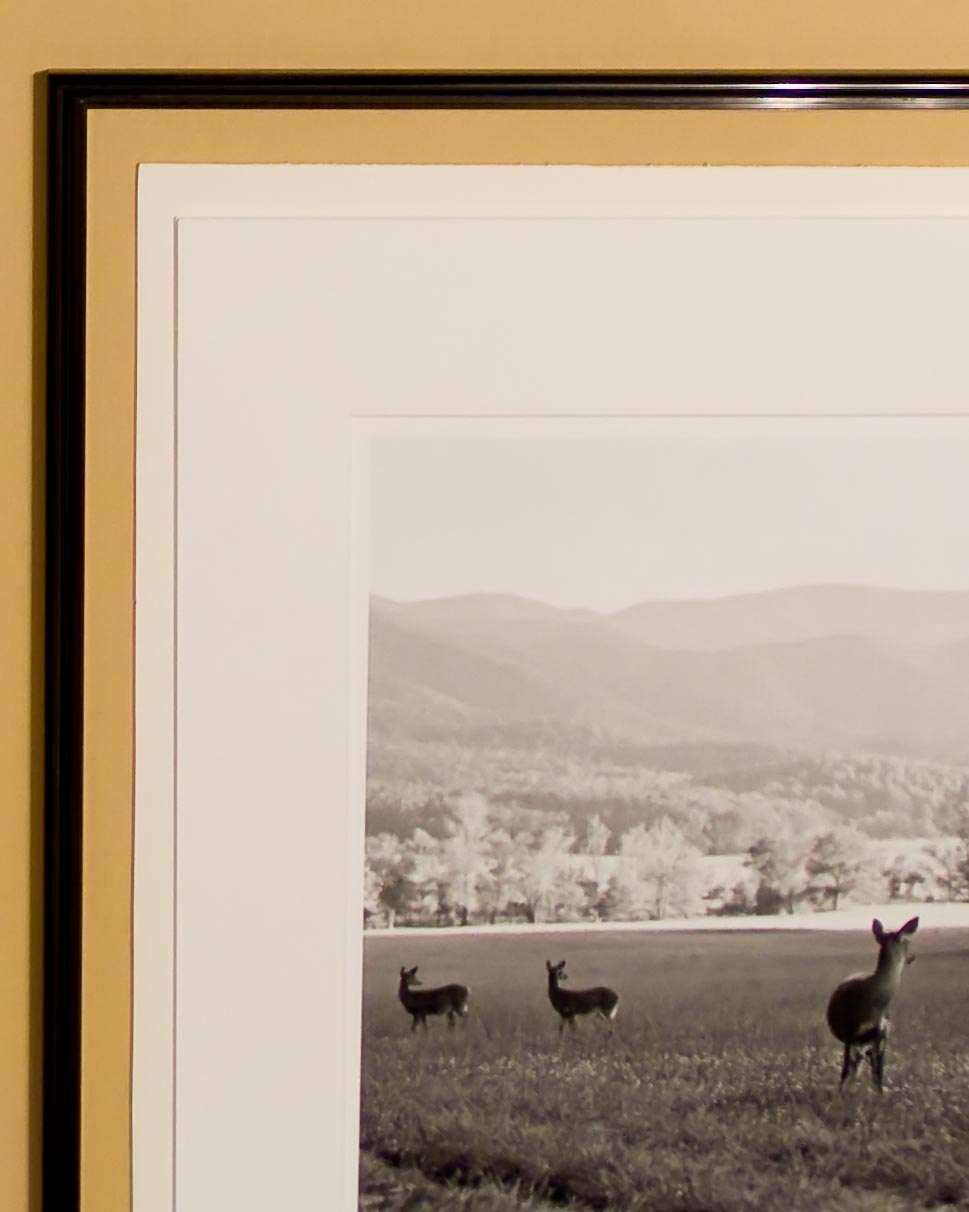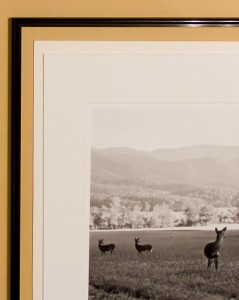
The second component of our process to provide you with Museum Quality Fine Art is using Special Framing Materials. All of our frames are black and all of our mat boards are white. The black aluminum frame is hand assembled remaining strong and light to avoid warping on larger sizes.
Then a special plate of Acrylite OP3 which is light weight and shatter resistant is placed into the frame. The Acrylite filters out 98% of harmful UV rays which can fade your photographs over time. This allows our Fine Art to last longer than photographs framed with glass not to mention this material ships much better than glass and is less fragile.
Next, your Fine Art photograph is sandwiched into a bright white hinged mat made with 100% cotton museum board. These 4 ply beveled mats use linen tape for the hinge helping to further seal your photograph. Archival clear photo corners are placed on the inside of the mat board to hold the Fine Art without actually attaching anything to the photograph. This keeps your Fine Art in its original mint condition.
After placing the hinged mat board containing the photograph into the frame behind the Acrylite, an Artcare Foamboard is placed into the frame stiffening the entire piece of art and protecting the back of the mat boards. The MicroChamber technology contained in the Foamboard protects your artwork from harmful effects of foan outgassing into the frame. All the surface papers on the Foamboard are acid-free and lignin-free. They also contain a 3% buffering agent to maintain an alkaline pH.
Finally, sealing your Fine Art in the frame, clips are place around the edges to keep everything taught in the frame and a wire hanger is hand attached from side to side enabling easy hanging of your photograph. Two foam dots are placed at the bottom back corners of the frame to protect your walls while the photograph is displayed.
Other cheaper framing methods could be used, but we strive for Museum Quality and long lasting Archival Fine Art. Our research has shown that using this framing method can add about 60% more to the life of a photograph.
